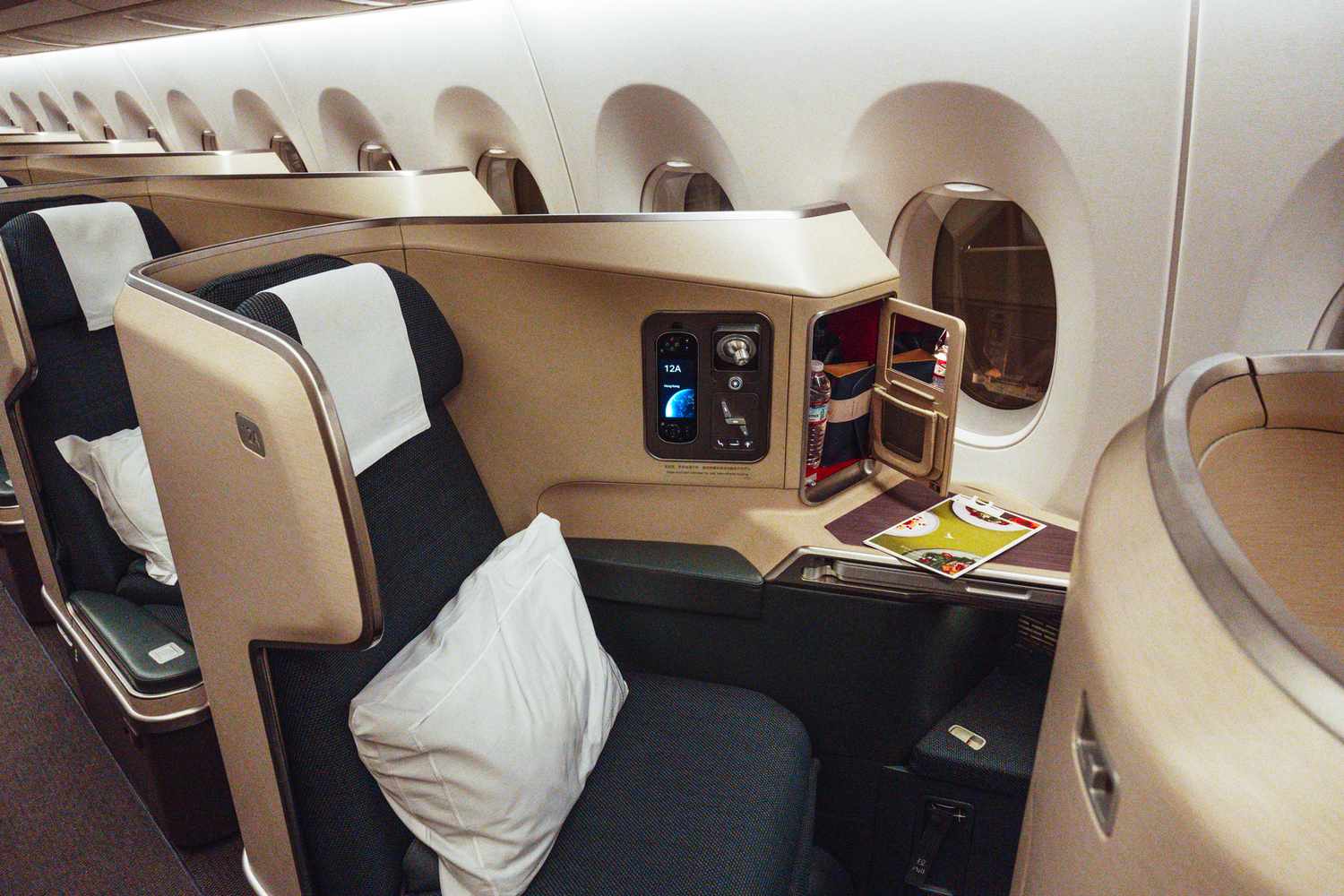:max_bytes(150000):strip_icc():format(jpeg)/TAL-lead-image-SHOULDIUPGRADE0725-d21f67d913734ace88bf9df065a408de.jpg)
- Upgrading your flight may be worth it on long-haul trips—especially for added comfort and rest.
- Experts break down how to evaluate upgrade offers based on perks, price, and personal priorities.
- From using points to asking at check-in, there are smart ways to fly premium without paying full fare.
We’ve all felt the pull: that tempting email offering an upgrade to premium economy or first class for a “special” price, sometimes upwards of $1,000. But is it really worth it, and how do you decide if it is?
While some travelers jump at the chance to sip Champagne and stretch out in a lie-flat seat, others would rather save the splurge for a future adventure or a luxurious hotel stay. While there’s no right or wrong answer, understanding what’s actually included—and how to weigh those costs against your personal priorities—can help you make the call with confidence.
From breaking down the cost per hour to considering the value of perks like lounge access and checked bags, we asked travel experts to help you decide if that pricey upgrade is truly money well spent.
Consider flight length and timing.
Both Quinn English of Freequinnt Flyer and Kyle Maltz, founder and COO of Dollar Flight Clubagree that upgrades are most worthwhile on long-haul flightsespecially overnight journeys. Comfort is king when it comes to upgrades, and the longer the flight, the more valuable it becomes, explains Maltz.
For domestic flights under three hours, English is generally content with economy. Anything over that, he says, “I’m taking a serious look at how much the upgrade is.” You’ll also want to take into account which seat you’re currently assigned in economy. For example, he says, “If you’re sitting in the middle seat by the lavatory, then that first-class upgrade may seem more enticing.”
Determine the value of comfort.
When you upgrade your cabin fare, you’re paying for comfort above all else, explains Maltz. So, if you think the additional cost is worth enhanced comfort on that flight, go for it.
Per the pro, those who physically need more space benefit the most from an upgrade, as factors like lie-flat seats, extra legroom, and better sleep quality can significantly impact one’s overall comfort and well-being. For instance, if you’re tall, “more space is going to go a long way toward your comfort on any flight.” The same applies to travelers with mobility concerns.
Aureliy/Getty Images
Weigh included perks and secret savings.
Beyond extra space, the additional perks that come with an upgrade can help make the cost easier to justify. With that in mind, says English, “You should factor everything into an upgrade—the flight time, better meals and service, nicer seats to sleep in, baggage allowances, priority boarding and immigration, as well as lounge access.” With all this in mind, he often books business class within Europe even when the seats aren’t particularly luxurious. “While it is nothing fancy, I appreciate the free checked bags I get, which can more than cover the cost of the upgrade.”
Maltz, meanwhile, takes a more numbers-focused approach when weighing the value of perks. “The simplest way is to just add up what you’d pay for those extras and see if the upgrade is close in cost,” he says. That said, you’ll need to ensure that you’re not double-paying for perks you already receive through status or credit cards, such as complimentary drinks or checked bags.
Do the math, but listen to your gut.
Some travelers rely on the “cost-per-hour” method, which involves dividing the upgrade price by the flight hours. For example, a $1,000 upgrade on a 10-hour flight works out to $100 per hour, making the splurge feel easier to justify on longer journeys. Even so, both English and Maltz agree that numbers aren’t everything.
“You can always math your way into making a decision, but at the end of the day, you should never spend more than you can afford,” English says. “In some instances, if you already bought the coach ticket months ago, paying for an upgrade doesn’t sting as bad since that purchase was made a long time ago.”
Maltz, meanwhile, recommends a quick gut check. “If it feels too pricey, and you don’t think the flight will be too uncomfortable, then don’t do it.” For him, “Personal value is the cornerstone deciding factor.”
Factor in special occasions and trip length.
Deciding when to splurge on an upgrade often comes down to the type of trip and the importance of arriving well-rested. “If you’re celebrating something special or flying a long red-eye and the price looks reasonable, then go for it,” says Maltz.
Beyond special occasions, the length of your trip can also guide your choice. As English explains, “I would argue that avoiding coach is most necessary on shorter vacations abroad where you want to wake up refreshed after your flight and are ready to hit the ground running since you have a limited number of days.” On the other hand, he says, “If you are taking a longer vacation, it wouldn’t be as bad to ‘waste’ your first day recovering from a flight cramped up in coach.”
Strategies for Scoring Upgrades Without Paying Full Price
Both English and Maltz tell Travel + Leisure that the best way to enjoy premium seats without the premium price tag is to use points and miles. But beyond that, English suggests regularly checking your online booking or contacting the airline directly, since upgrade offers can sometimes appear closer to departure. Meanwhile, Maltz recommends checking in early and speaking directly with the counter since “some airlines offer discounted upgrades at check-in.” Additionally, “If you have elite statustake advantage of it—many airline programs prioritize status members for discounted upgrades.”





